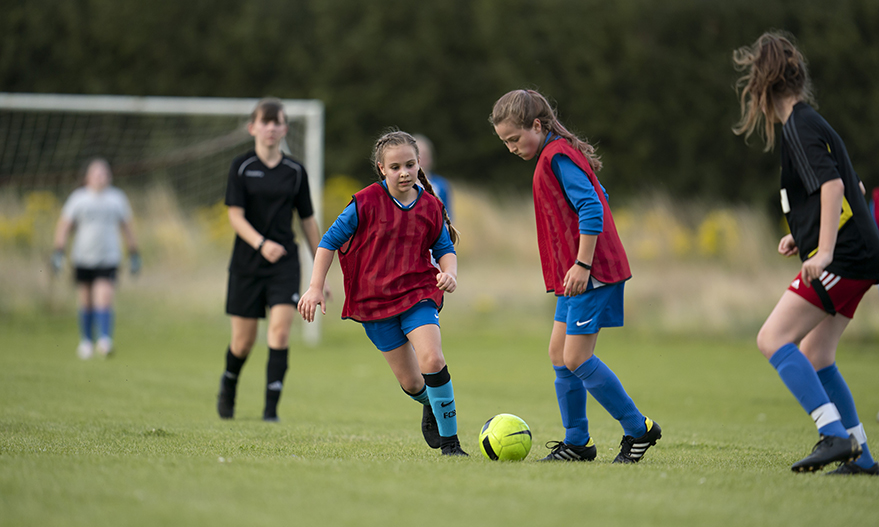
5 top tips for developing receiving skills
- The Boot Room
- 16 November 2020
Four FA staff members provide their top tips to help coaches work on receiving skills with their players.
Paul Holder, Paul McGuinness, Justin Cochrane and Gemma Grainger met virtually to take an in-depth look at the art of receiving and the skill that entails.
While sharing their insight and experiences, the group also listened to an interview with former England and Manchester United midfielder, Michael Carrick, who talked about what he would do to make sure he was best prepared to receive the ball.
Here are five of their top tips to help you develop your players' receiving skills.
1. Think ahead
Paul Holder: When do you start thinking about receiving? Well before you get the ball at your feet, things are going on, there's a lot of planning, a lot of scanning.
Some of the top players are thinking in the future, and we’ve got to help players to start thinking in the future. With Michael Carrick, you look at before [the ball arrives], and he says 'where do I want the pass to go?' Now he thinks about that as the ball is on its way or even before that. Then he prepares. That process becomes instinctive over time but only if he practises it a lot and he’s reminded of when it doesn’t go well or when it does go well.
2. Get in position Michael Carrick: Where do I want my pass to go, that would shape [my body position] rather than thinking ‘I’ll get the ball, then where do I want to pass it’ - your body could be in all sorts of positions where that pass forward, that best pass, is not possible anymore because you’re facing the wrong way.
You try and think about the pass and then prepare your body positioning to give yourself the best chance. That develops and happens instinctively as you go on and progress. But it’s the thought of, where’s the most effective pass, let me make the picture, because at this moment in time I can’t make that pass, so I need to prepare my body at an angle and a position to be able to make it.
Gemma Grainger: A key factor in receiving is your body shape. Within the constraints practices we do, one of the challenges that I use with some of the young players is, ‘can you get yourself in a position where you can see the ball and the goal?’ So, it naturally opens up your body to be able to see the pitch.
3. Look forward Paul McGuinness: I know from talks with Michael, and Tony Carr at West Ham who was his youth coach, he had the simple message to look forward, play forward. That’s the simple thing in the back of his mind from his coach, which meant that whatever happened he was looking forward for the pass before it came. That then meant he would prepare his space to receive it and would rearrange his body; however the ball came, to enable him to play forward.
As simple as that, even with grassroots kids, ‘can we play forward?’ It means that they’re already looking, they’ve got to look forward before the ball comes. If you don’t look forward, you don’t see that forward picture, the furthest most hurtful pass.
4. Create the right environment Justin Cochrane: I think a lot of the time we think it’s a technical issue why our kids don’t receive well during games, but it could be external. They could be worried about losing the ball, worried about giving it away; they think they might lose the game or concede a goal, their parents might be getting on to them, their peers might be getting on to them, it might be their coaches.
It’s important we create that right environment, so they don’t fear, that they don’t play football fearfully. It’s also important that whatever level you’re coaching at, that you relate it and chunk it down for your context, but I think those external things that affect players, we need to be aware of them.
5. Practice Paul Holder: It’s important that if you want these skills and you want to be masters of these skills, that you’ve got to practice them. Your body will remember whatever you practice. They say practice makes perfect, actually, practice makes permanent.
I know that kids won’t get it right, but it’s key that we keep repeating the same things, and then your body remembers it, and that's how you get mastery of it. It doesn't happen overnight. I think it's important that coaches start to think about the quality of the practice they do and the demands that they put on players and the repetition of that. In the end, perfect practice will equal mastery.


